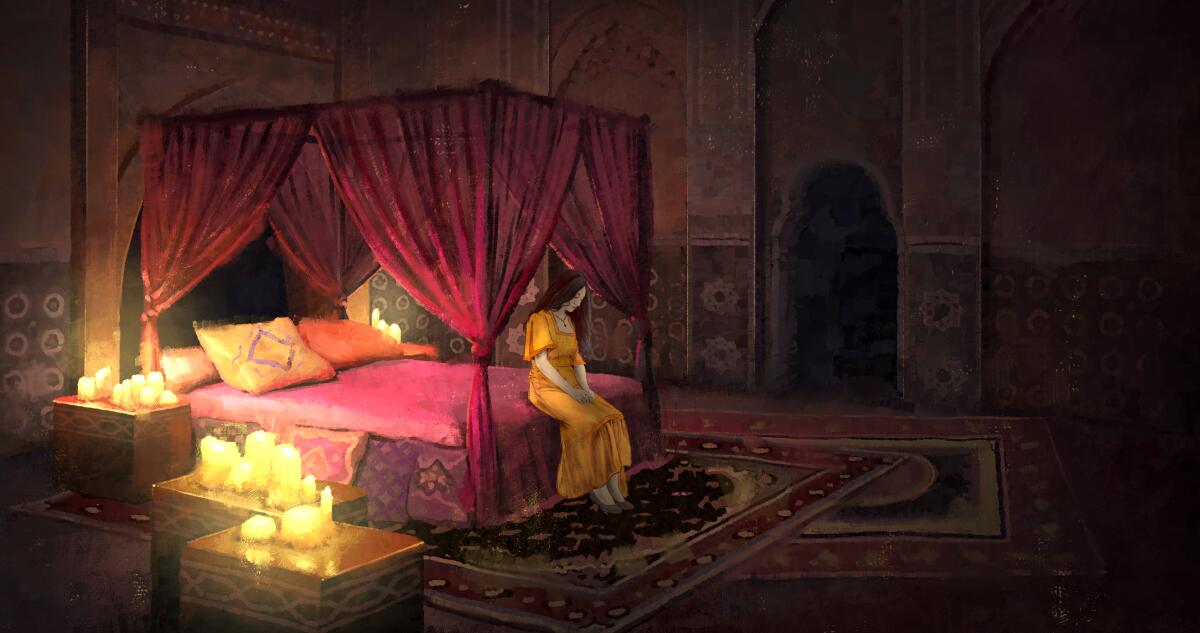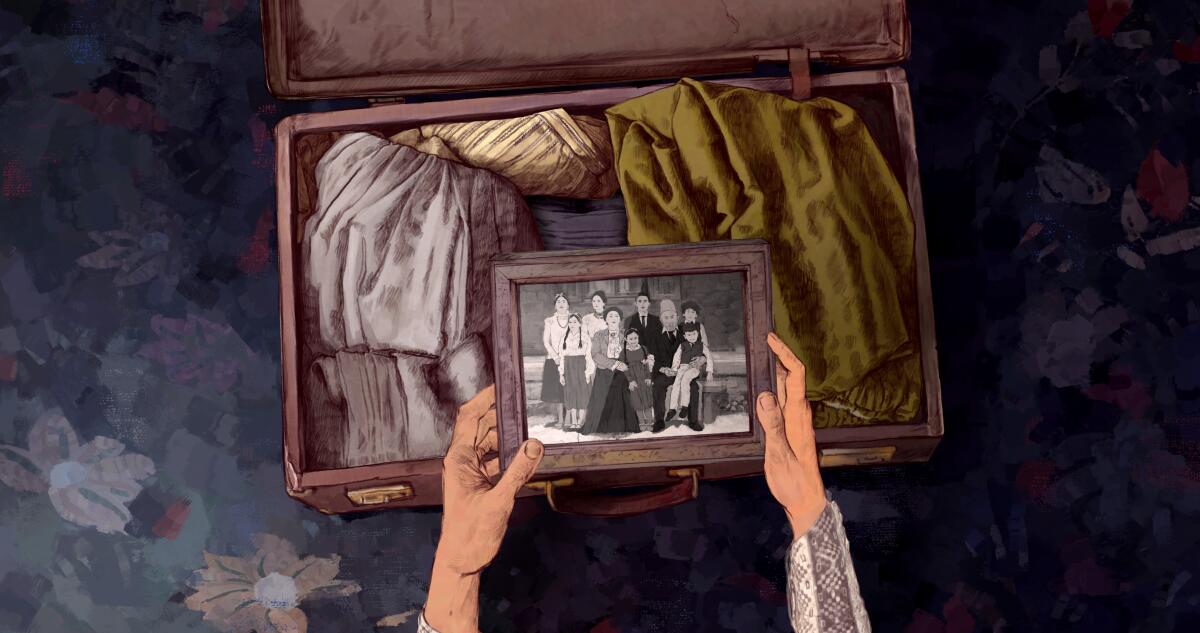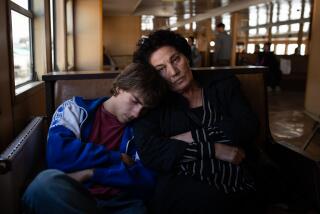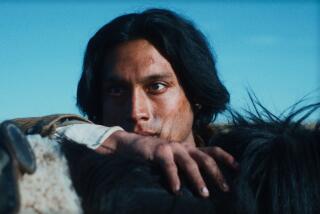Review: In ‘Aurora’s Sunrise,’ a survivor’s story comes to life via unforgettable animation

Too often, documentary filmmakers fall back on using animation in a rudimentary way, just to keep the audience from zoning out during some long anecdote or info dump. But in director Inna Sahakyan’s medium-bending “Aurora’s Sunrise,” the animation is essential, not just to understanding the story but to grasping its purpose. Nearly three quarters of the film has been brought to life by a team led by illustrator Gediminas Skyrius. They deliver sequences that look like rippling paintings, splashed with red to capture the violent devastation of the Armenian genocide.
“Aurora’s Sunrise” is about Aurora Mardiganian, who, in animated form, is voiced by Arpi Petrossian and physically modeled by Anzhelika Hakobyan. The real Aurora, who died in 1994, is in the picture too, seen and heard in archival interviews. She became famous in the early 20th century for surviving the slaughter as a teenager and then raising awareness around the world. Her own narrative is harrowing. Much of her family was murdered by soldiers of the Ottoman Empire, and then she endured a grueling ordeal, marching through deserts and being sold into slavery.
Sahakyan and her team tell the story the way Aurora did, focusing on small, personal details more than mass murder. The film is dotted with vivid moments: a mother smearing mud on her daughter’s face in the vain hope she’ll look too ugly for the soldiers to molest; a long, dialogue-free sequence where Aurora sits silently in a harem, trying not to react to the disturbing sounds echoing through the halls.
Aurora eventually escaped to the United States, where she dictated a memoir, “Ravished Armenia,” that was adapted into the 1919 silent “Auction of Souls,” for which she also played the lead. “Auction of Souls” is a lost film, save for one surviving reel and some production stills. Sahakyan scatters those pictures and some of the 20 minutes of existing footage throughout “Aurora’s Sunrise,” sometimes in direct contrast with the animation.

None of the images are presented as any more authentic than the others. What sets this film apart from other docu-memoirs is the way Sahakyan articulates how being the spokesperson for an atrocity can foster dissociation. Aurora relived some of the worst experiences of her life multiple times: as a writer, an actor and an activist. Each time she had to ask if she was staying true to her actual memories or just recalling scenes from her movie.
The animation — combined with the “Auction of Souls” material and the archival interviews — helps Sahakyan get across how those variations bled together in Aurora’s head. A sequence where she compares the crucifixions she witnessed in the desert to the Hollywood version is especially shocking.
Even more than that, though, the illustrations sharpen Aurora’s truth to a kind of clarity. In a haunting climactic image, we see her standing at Ellis Island, awaiting the arrival of her rescued sister, with a hopeful look on her face that gradually falls into blankness as she recalls the idyllic past that was stolen from her. Yes, we could listen to the real Aurora describe that moment to us. But seeing is believing.
'Aurora’s Sunrise'
In Armenian, Turkish, Kurdish, German and English, with subtitles
Not rated
Running time: 1 hour, 36 minutes
Playing: Laemmle Glendale
More to Read
Only good movies
Get the Indie Focus newsletter, Mark Olsen's weekly guide to the world of cinema.
You may occasionally receive promotional content from the Los Angeles Times.








